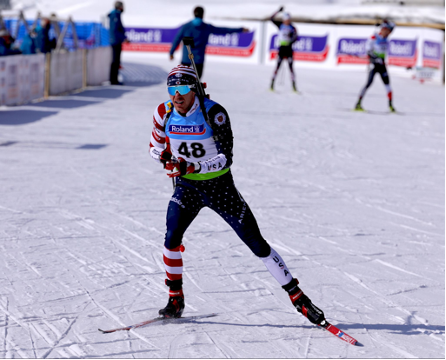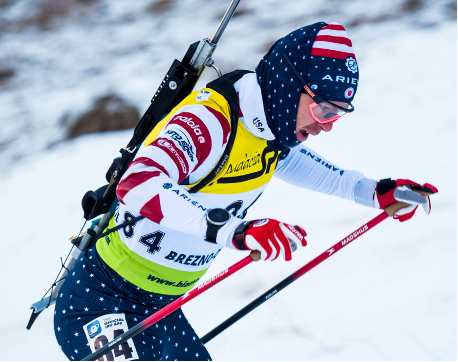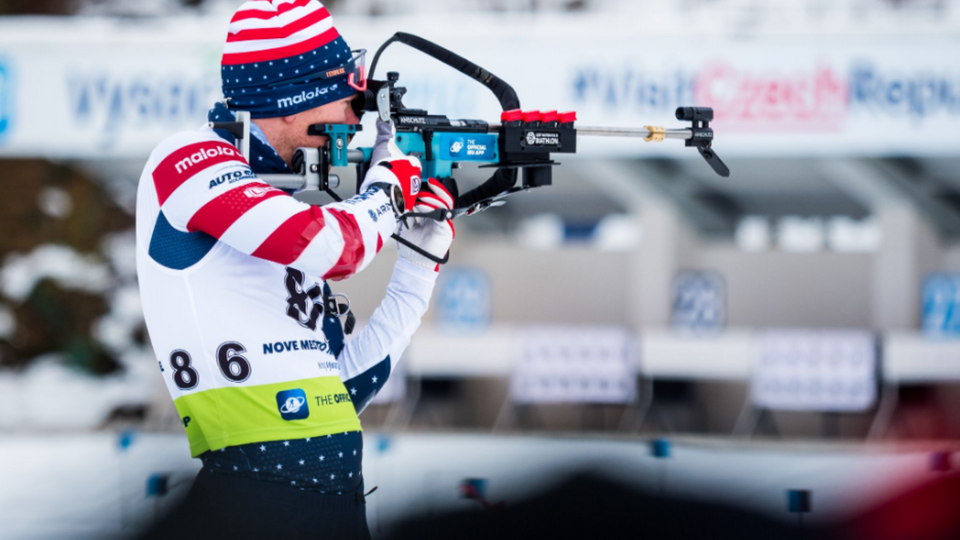Posted by Scott Lacy on Mar 24th 2022
Types of Biathlon Races
With Biathlon Nationals happening this weekend in Lake Placid, NY, I felt it pertinent to wrap up this winter's series on “What is Biathlon” with a summary of the types of Biathlon races on the World Cup circuit. The sister to Nordic skiing has some similarities but also some differences making it quite an interesting sport to watch and not just another ski race. With skate skiing and precision shooting as the only throughline in all Biathlon races, each format is fun, unique and exciting. This weekend's National Championships include a sprint, pursuit and relay.

Race Formats in Biathlon:
In my first post explaining this sport, Biathlon Basics, I gave a basic biathlon race explanation. I recommend re-visiting that post for the full article including details about the sport at large. In short - there are two broad categories of races, a four shooting stage race and a two shooting stage race. A racer always begins and ends with skiing; two stage races are three laps and four stage races are five laps with shooting bouts happening between laps in both formats. But within those general groupings are many different iterations of a biathlon race.
Sprint Race: This is the most common format of biathlon race. These races are individual starts, meaning a single skier starts every thirty seconds, skis their race, and has a race time computed from the elapsed time between start and finish. For men this is a 10 km race comprising three laps of a 3.3 km course and a single prone shooting after lap one and single standing shooting after lap two. For women this is a 7.5 km race with three laps of 2.5 km and the same shooting format. Individual starts allow for any number of racers to compete in a given race because it spreads the skiers out for shooting on a thirty-point range where only thirty skiers can be shooting at any moment in time. Each missed shot is a 150meter penalty lap.
Pursuit: This is a bit more complicated of a format and is based on the finish times of a sprint race which is often the day before a pursuit. Only the top sixty racers from the sprint qualify to race the pursuit, which is due to the limited number of shooting points on a range. The skiers start in the finish order of the sprint race the day before and have start times based on the time back from the first-place finisher. As in, the skiers start in pursuit of the racer who finished in front of them. This is a five lap, four shooting stage race in the shooting order of prone, prone, standing, standing. (Denoted as P,P,S,S) Each missed shot is a 150meter penalty lap. Men race a 12.5 km race - five laps of a 2.5 km course, women race a 10 km race – five laps of a 2 km course. A great deal of shuffling can happen during a pursuit and is an exciting race to watch.
Mass Start: Mass starts are pretty simple! Everyone starts at the same time in one big mass of biathletes. The start is called the scramble where it is not uncommon to see broken poles or skis or even a crash at some point during the first lap before the racers spread out more. The finish order is just the order the skiers cross the finish line, that’s it. This is a four shooting stage race in the shooting format of prone, prone, standing, standing (P,P,S,S). There can be thirty or sixty skiers in a mass start who are qualified from the previous sprint race result. Each missed shot is a 150meter penalty lap. Men race a 15km race – five laps of a three km course, women race a 12.5 km race – five laps of a 2.5 km course.
Individual: An individual format is the longest distance biathletes will compete in. Starting as an individual start (a skier every thirty seconds) men race a 20 km race - five laps of a four km course, and women race a 15 km race - five laps of a three km course. Individual races are four shooting stages in a prone, standing, prone, standing format (P,S,P,S). Unlike the other races, there are no penalty laps for missed shots, instead the penalty is a one-minute time add-on to your elapsed time. When a typical 150 meter penalty lap is about 25 seconds, having a one-minute penalty means it is much more impactful to miss a target. This is because the longer distances favor stronger skiers over stronger shooters and a one minute time penalty evens the field to keep the balance of shooting and skiing skill.


Relay: Relays are cool races!! Often very exciting with lots of jostling of the order and a chance to have a nation race as a team and not as single skiers. Relays are mass starts where each team is made of four skiers on the same nation/team and each skier races a sprint race, then tags the next person on their team. A relay is single gender with teams of four men or four women. The men each race a sprint format of 7.5 km (3x2.5km laps) with P,S shooting stages. The women each race a sprint format of 6 km (3x2km laps with P,S shooting stages. These are slightly shorter distances than the individual sprint races. Relay’s result in a total of 12 laps and eight shooting stages per race! Each missed shot is a 150meter penalty lap, but you can use up to three spare rounds per shooting stage to hit missed targets, and you must use them if you have a missed shot. This means you have up to eight shots to hit five targets and the three spares are hand loaded as single shots. Then if a skier still has a missed target, a penalty lap must be skied. If a team is lapped at any point in the 12 lap race, the team is pulled and does not receive a finish time. Relays are very cool races and truly bring nations and teams together.
Mixed Relay: A mixed relay means mixed gender. The teams of four consist of two men and two women. Everything is the same as the same gender relay described above. The distance of the lap is determined by which gender starts first. If women start first, every skier is racing a 2 km lap and if men start first, every skier is racing a 2.5 km lap. Still 12 laps and eight shooting stages, each skier shoots P,S. The only difference is a penalty lap is 150meters, which is half the normal distance. These are also very fun to race and watch and bring together the team and nation behind the team.
Single Mixed Relay: This is the newest format on the World Cup and it is very high paced though a bit complicated… A relay team consists of one man and one women skier and all single mixed relays take place on a 1.5 km course. The race starts as a mass start with the first skier skiing the 1.5 km loop, shooting prone, skiing the loop again and shooting standing, then immediately tagging the second skier after exiting the range on the second shooting. The second skier then skis and shoots twice and tags immediately after shooting back to the first skier again. The first skier does the same thing as before but then the second skier will ski the 1.5 km loop to finish instead of tagging off. This means the second skier will ski one more loop than the first. Each shooting stage is allowed up to three spares if needed and if a target is still missed, the skier must ski a 75 meter penalty loop (half the normal penalty loop distance). And if a team is lapped, the team is pulled from the race. It is crazy with a ton of moving parts and is very spectator friendly with lots of shooting in the stadium and fast, short laps on course.
~~~~~~~~~~~~~~~~~~~~~~~~~
Wow! That was a lot of information. All of the above distances are for the World Cup level and IBU Cup level. There are shorter distances for juniors and various domestic races. The most common races are sprints since they often are required to qualify for the other races. Though, in a full World Cup season, there are so many races, you will likely see all of these at least once and possibly twice throughout the season.
Watching biathlon races is the best way to understand and follow the various formats. It is nuanced and sometimes complicated, but in the end it is a race and always exciting to see athletes skiing as fast as they can combined with precision shooting. I hope you all get to see a live biathlon race one day, they are pretty dang cool, and if in Europe, will probably have 10,000-100,000 other spectators! You can always watch online throughIBU TV as well.
Happy March! Thank you all for following along in Biathlon this season and learning about this awesome sport!


